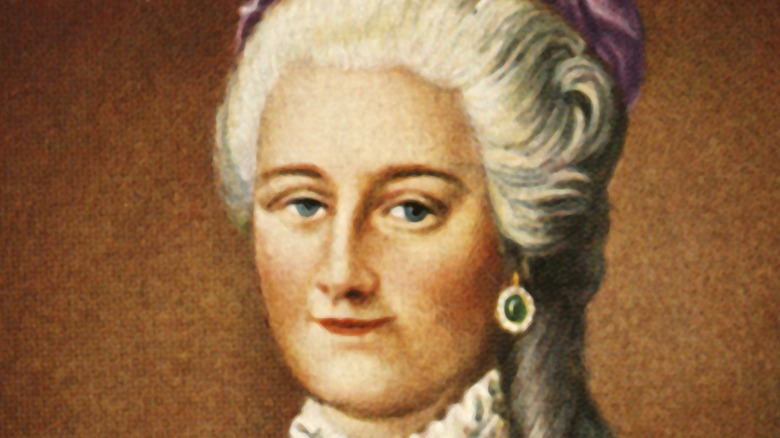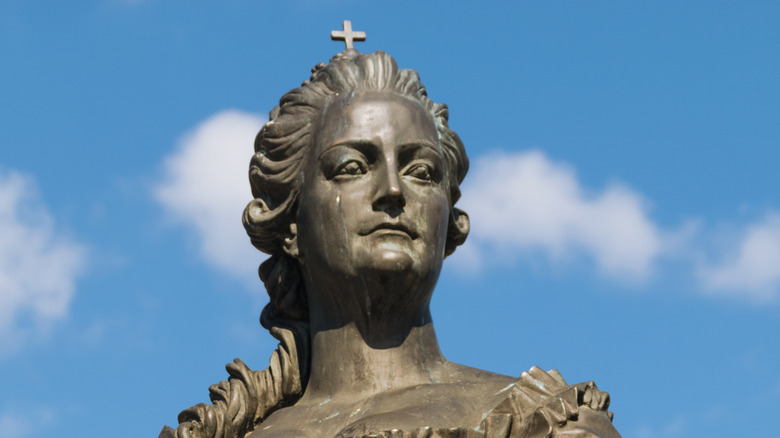What Really Happened After Catherine The Great Died?
Most of the Enlightenment period's most well-known champions are remembered as men. One relatively unheralded supporter of Enlightenment ideals, however, was, in fact, a woman: none other than Catherine the Great, ruler of Russia from 1762 to 1796. Born Princess Sophie of Anhalt-Zerbst in what is now Germany, to a family with noble connections but little money, one reason why Catherine's forwarding-thinking tendencies are now overshadowed is how she came to power in the first place. Alongside her husband, Peter Romanov, grandson of Peter the Great, Catherine came to rule in an otherwise nonviolent coup, usurping Frederick the Great of Prussia in 1762, according to Smithsonian Magazine.
Among other accomplishments while in power, Catherine sought to bring Enlightenment-era modernity to the Russian people, including judicial reforms, vaccination efforts, the expansion of the empire, and public education. When any woman stuck her neck out for progress as Catherine is known to have done, however, her character is often impugned. Unhappily married, Catherine is known to have taken many lovers all throughout her life, but one of the most salacious rumors associated with the ruler is related to her passing in 1796. Examining what really happened after Catherine the Great died reveals this rumor couldn't be further from the truth.
Did she have sex with a horse?
According to History, sexual deviancy has often been tagged to women either in power or who are seeking to change society, among them Cleopatra, Anne Boleyn,and Catherine the Great, among others. Catherine took the throne following the death of Peter and in lieu of their son, Paul, who was only 8 at the time. Segments of public opinion turned against Catherine when she took a stand against the French Revolution, and in turn, kinky rumors about the Empress proliferated, especially in France as well as England. One of the most outrageous? Her death came about when a harness broke suspending a horse over her bed in a lusty bout of lovemaking between Catherine and the beast.
Horse riding was a symbol of power at the time, and similar stories were associated with a number of ruling women, or any woman who dared to simply step beyond their restrictive role in society. In truth, Catherine died from a stroke, but the bestiality rumor became so potent, among other slander levied at the deceased Empress, that her very own son, Emperor Paul I, passed an edict after she died, forbidding a woman from ascending to the Russian throne ever again, making Catherine the Great the first and only woman to have ruled over the country.

